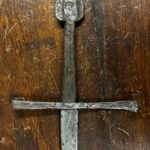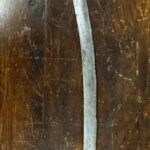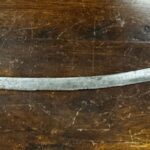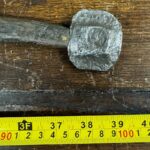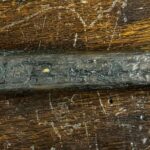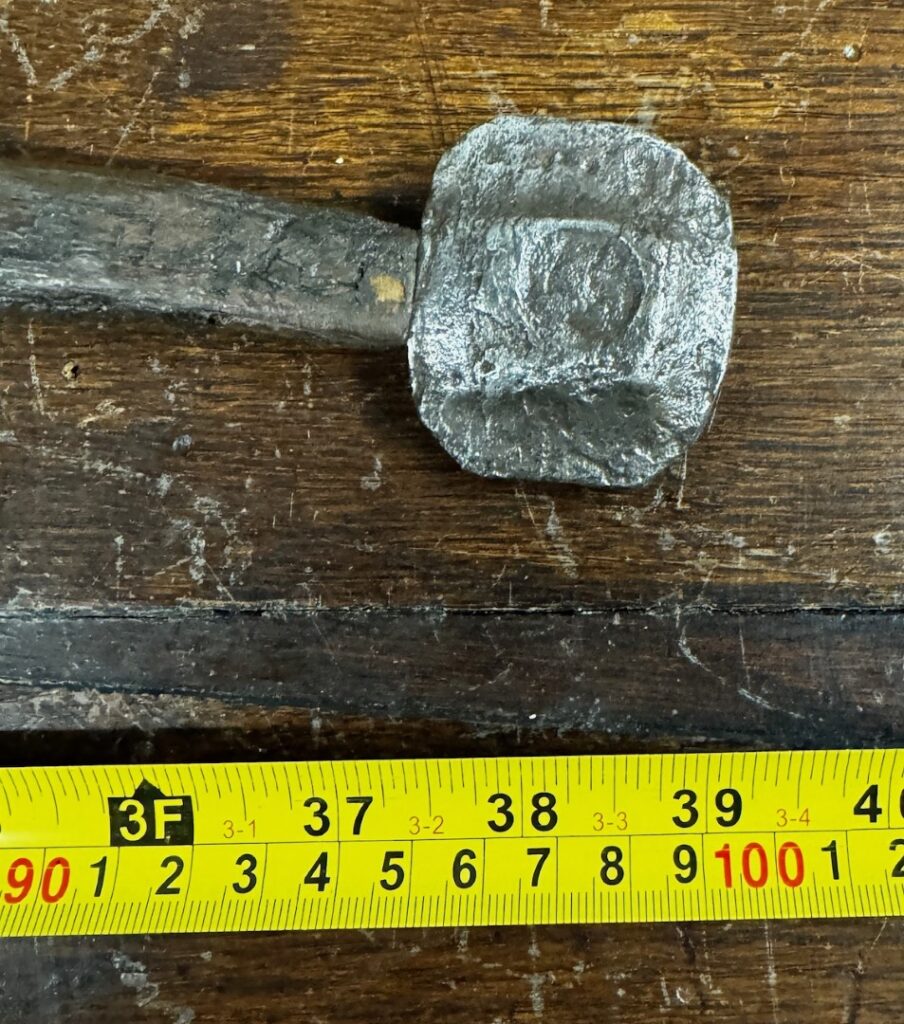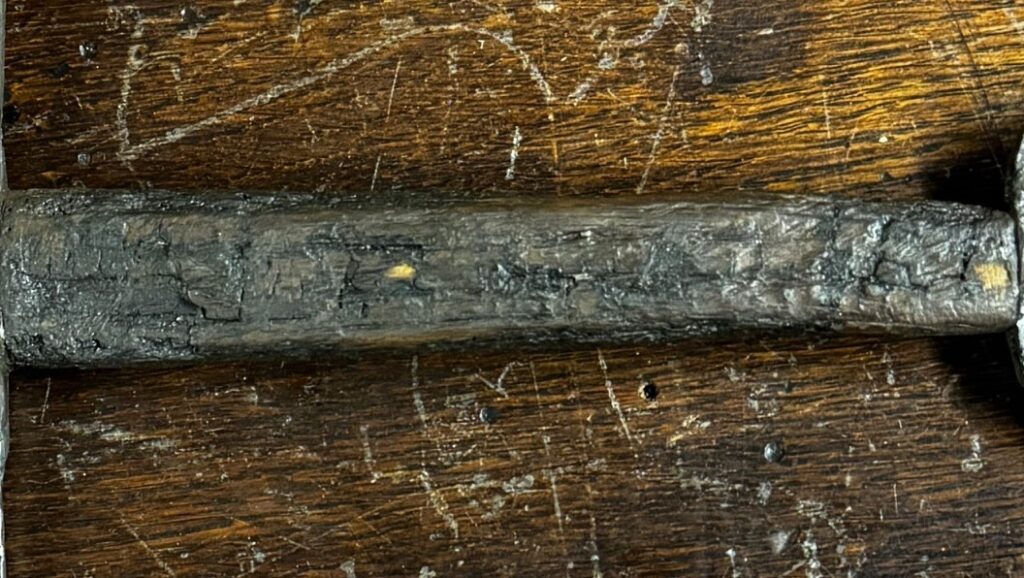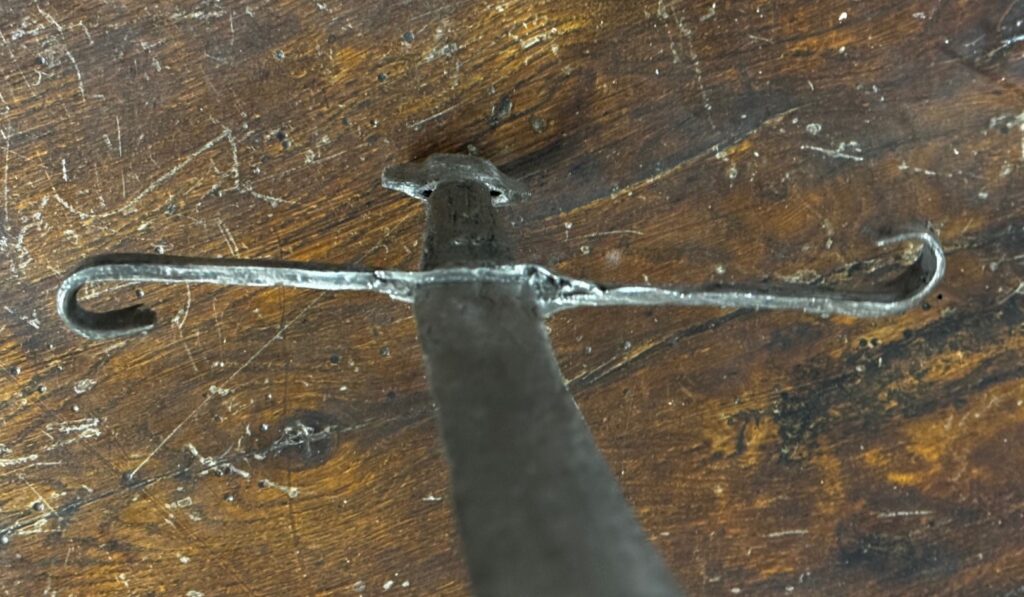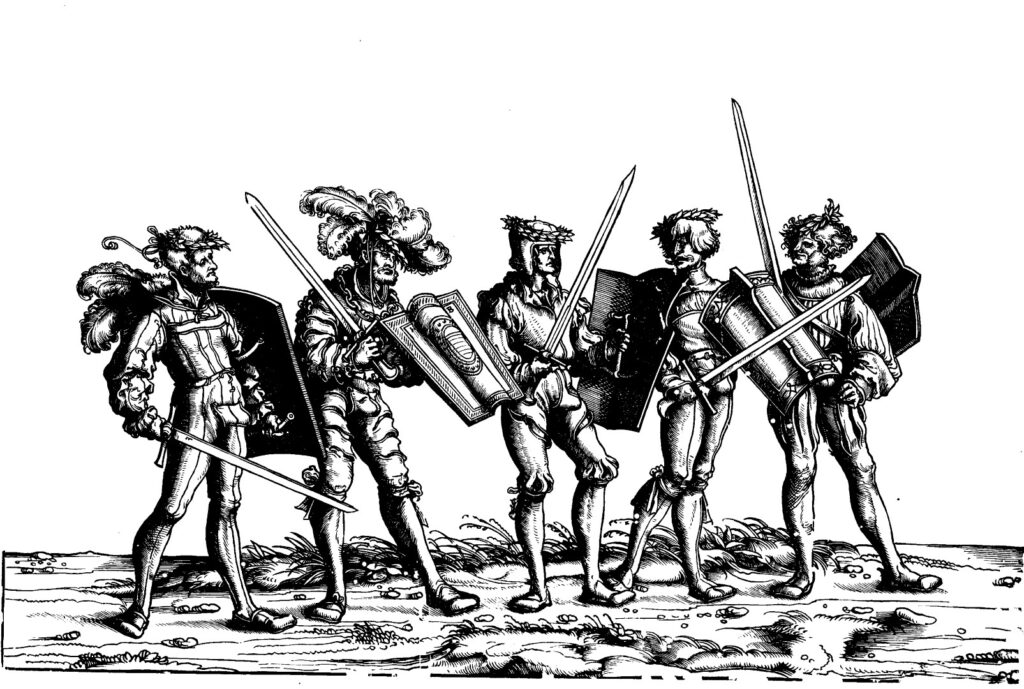1605) RARE HUNGARIAN WAR SABER CIRCA 1500 WITH ORIGINAL WOODEN GRIP: An exotic and esoterical sword that attracts the eye and the imagination. Very good condition for having been buried in a Hungarian bog for over 500 years. For such a rarity, this “grosses kriegsmesser” is very reasonably priced for an immediate sale!
Discussion: In German, grosses kriegsmesser translates to “large/great war knife.” This uniquely distinguishable type of sword was popular in Hungary and had a strong following in Germany, where, in the 15th and 16th centuries, it was adopted for warfare. They are somewhat rare, and most examples are ground finds (see page 288, items 12 and 13 in my book).
Emperor Maximilian I was very fond of kriegsmessers and owned three on display at the Hofjagd und Rustkammer (#A123, #A145, #A173). The grosses kriegsmesser is a single-edged sword, usually with a strong curvature on the blade, which qualifies it as a saber. The “saber” is believed to have been introduced to Eastern and Central Europe by Central Asian nomadic invaders as early as the 6th century (see page 267 in my book).
Some kriegsmessers have a hook or bird’s beak pommel, others have no pommel at all, and some have a pommel built into the tang. The kriegsmesser is believed to have been exported to Western Europe from the Hungarian Bohemian region or current-day Hungary. In the woodcut Triumph of Maximilian (see page 408 in my book), there are five soldiers with kriegsmessers and shields. Maximilian referred to these troops as Gefecht or Fenders.
Provenance: -Found in a Hungarian bog.
-An old Hungarian collection.
-Andrew Garcia collection.
Conclusion: This is a rare typology of sword. It’s in good condition #2 for a ground find. The fact it still has its original wooden grip is quite remarkable. This is a sword for the hard-core, enthusiastic collector who is more into a war weapon as opposed to a parade piece. Very reasonably priced at under $3.5K for a quick sale !!!*

